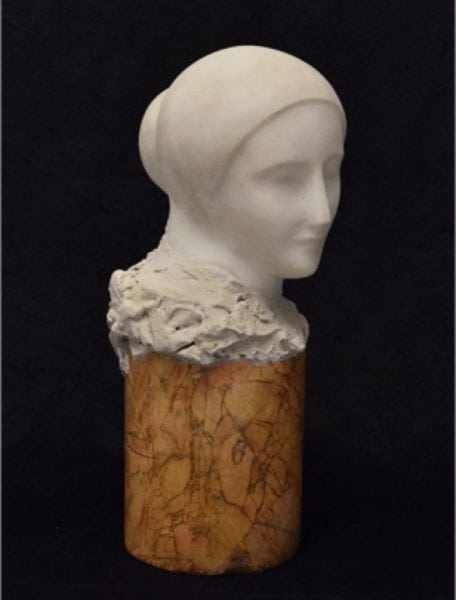Female Head, Circa 1920-25
Elie NadelmanWhite marble
5 1⁄2 × 4 × 6 1⁄2 inches
Label: 82 (on base)
Provenance
The artist, Riverdale, New York
Jan Nadelman, his son, by descent
Philip Nadelman, the artist’s grandson, by descent
This beautiful and unfinished marble head provides insight into Nadelman’s working process. The features are only roughed out and claw chisel marks are still visible throughout. Yet, we can already discern an elegance in the volumes of the face and a serenity in her countenance that is typical of Nadelman’s ideal heads. Additionally, small pinprick marks are scattered regularly across the surface, suggesting that the design was used as a maquette to transfer this form onto another block with the assistance of a pointing machine – a simple mechanism used to locate a measurement on one object and then find the same coordinate on a rough block. This type of work was routinely assigned to assistants in large sculpture ateliers. Rodin was known to employ up to fifty craftsmen, who created a multitude of authentic replicas of his plasters in marble or bronze. With the use of a pantograph, the scale of each piece could also vary. Nadelman ran a similar, if smaller shop. As Cynthia Nadelman, the artist’s granddaughter, noted, “He regularly had sculptures reduced and enlarged from plaster models, as well as duplicated or approximated in more than one material, and he authorized sculptures to be made in editions.” Indeed, by 1915, Nadelman brought one of his favorite practicien, Arturo Boni, to New York from Paris to assist him. Lincoln Kirstein preserved the names of at least three other assistants – Ferdinand Terenzoni, Julius Gargani, and Teo Fiorato. While it was being worked on, the head was casually attached to the base with a swath of plaster.

